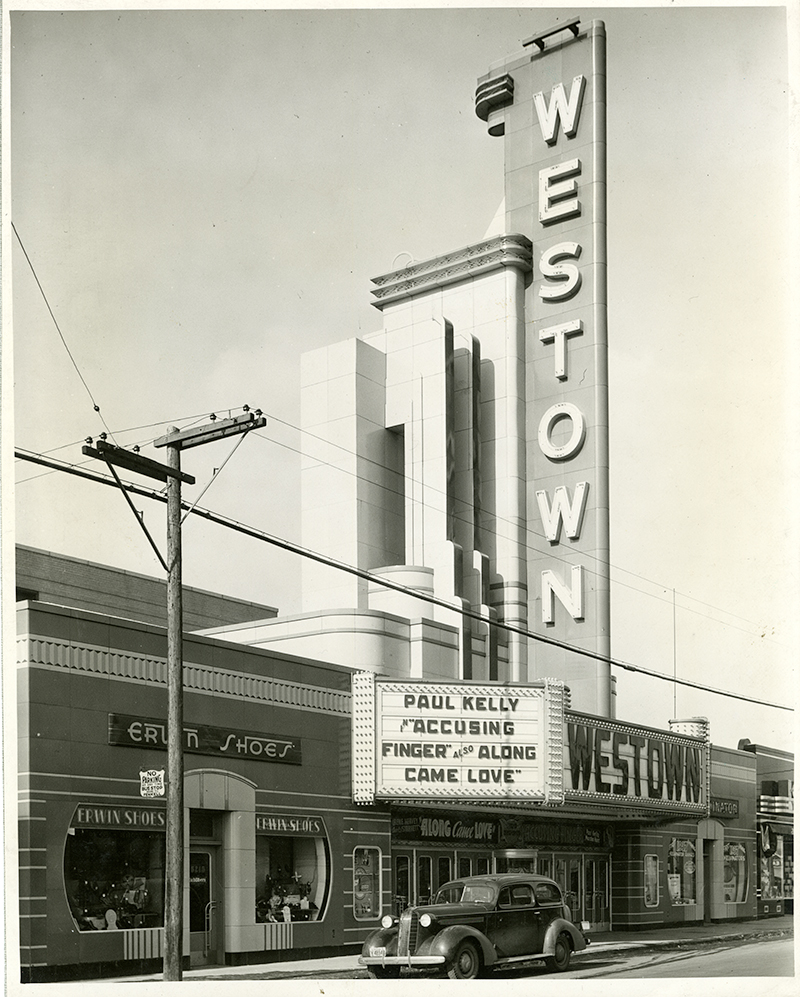
1936 In the economically battered 1930s, people needed a means of escape, a temporary salve for the financial woes of the day. Neighborhood theaters offered such a tonic, and they were prolific in Detroit. Sure, the palatial downtown theaters showcased top-notch entertainment and first-run flicks, but tickets weren’t cheap. Neighborhood theaters showed second-run films, and admission was more affordable. Some of these second-tier showplaces were anything but shabby. Consider the Westown Theatre, pictured here in the year of its opening, 1936.
Its sleek, Art Moderne style was the pinnacle of taste in the 1930s, and the spacious Westown, at Wyoming and Fenkell on the city’s west side, seated 2,000 — large by neighborhood theater standards. The marquee, punctuated by a towering sign declaring the theater’s name, promoted a double feature: a drama, The Accusing Finger, and a comedy, Along Came Love. Detroit architect Charles N. Agree designed the Westown, and his name soon became associated with other architecturally streamlined theaters: the Harper, the Palmer Park, the Royal, and the Beverly, for instance. Before designing the Westown, Agree (1897-1982) had already established a solid architectural pedigree; he was responsible for the Grande Ballroom on the west side and the Vanity Ballroom and Whittier Hotel on the east side.
He had also built the sumptuous Hollywood Theatre on the city’s southwest side. The Westown enjoyed only about three decades of life before closing circa 1967. It has been razed, but as any patron of the Westown can attest, memories outlive rubble. —George Bulanda
|
|
|












